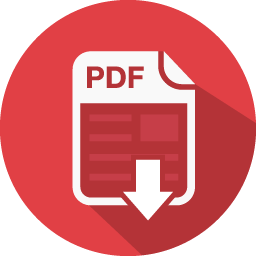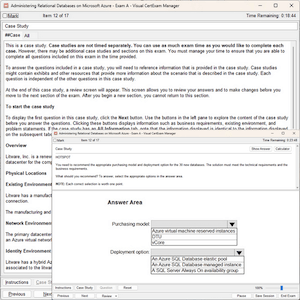Google PROFESSIONAL-CLOUD-DATABASE-ENGINEER dumps - 100% Pass Guarantee!
Vendor: Google
Certifications: Google Certifications
Exam Name: Google Cloud Certified - Professional Cloud Database Engineer
Exam Code: PROFESSIONAL-CLOUD-DATABASE-ENGINEER
Total Questions: 132 Q&As ( View Details)
Last Updated: Mar 12, 2025
Note: Product instant download. Please sign in and click My account to download your product.

- Q&As Identical to the VCE Product
- Windows, Mac, Linux, Mobile Phone
- Printable PDF without Watermark
- Instant Download Access
- Download Free PDF Demo
- Includes 365 Days of Free Updates

VCE
- Q&As Identical to the PDF Product
- Windows Only
- Simulates a Real Exam Environment
- Review Test History and Performance
- Instant Download Access
- Includes 365 Days of Free Updates
Google PROFESSIONAL-CLOUD-DATABASE-ENGINEER Last Month Results
 98.6% Pass Rate
98.6% Pass Rate 365 Days Free Update
365 Days Free Update Verified By Professional IT Experts
Verified By Professional IT Experts 24/7 Live Support
24/7 Live Support Instant Download PDF&VCE
Instant Download PDF&VCE 3 Days Preparation Before Test
3 Days Preparation Before Test 18 Years Experience
18 Years Experience 6000+ IT Exam Dumps
6000+ IT Exam Dumps 100% Safe Shopping Experience
100% Safe Shopping Experience
PROFESSIONAL-CLOUD-DATABASE-ENGINEER Q&A's Detail
| Exam Code: | PROFESSIONAL-CLOUD-DATABASE-ENGINEER |
| Total Questions: | 132 |
| Single & Multiple Choice | 132 |
CertBus Has the Latest PROFESSIONAL-CLOUD-DATABASE-ENGINEER Exam Dumps in Both PDF and VCE Format
- Google_certbus_PROFESSIONAL-CLOUD-DATABASE-ENGINEER_by_Tim_128.pdf
- 229.9 KB
- Google_certbus_PROFESSIONAL-CLOUD-DATABASE-ENGINEER_by_johnnyquad_111.pdf
- 231.46 KB
- Google_certbus_PROFESSIONAL-CLOUD-DATABASE-ENGINEER_by_UPENDRA_YADAV_128.pdf
- 233.44 KB
- Google_certbus_PROFESSIONAL-CLOUD-DATABASE-ENGINEER_by_AMIR_BEN_HSOUNA_114.pdf
- 232.63 KB
- Google_certbus_PROFESSIONAL-CLOUD-DATABASE-ENGINEER_by_mata-lim_116.pdf
- 229.78 KB
- Google_certbus_PROFESSIONAL-CLOUD-DATABASE-ENGINEER_by_DORLEY_F_WEAH_109.pdf
- 233.29 KB
PROFESSIONAL-CLOUD-DATABASE-ENGINEER Online Practice Questions and Answers
Your organization has an existing app that just went viral. The app uses a Cloud SQL for MySQL backend database that is experiencing slow disk performance while using hard disk drives (HDDs). You need to improve performance and
reduce disk I/O wait times.
What should you do?
A. Export the data from the existing instance, and import the data into a new instance with solid-state drives (SSDs).
B. Edit the instance to change the storage type from HDD to SSD.
C. Create a high availability (HA) failover instance with SSDs, and perform a failover to the new instance.
D. Create a read replica of the instance with SSDs, and perform a failover to the new instance
Your application uses Cloud SQL for MySQL. Your users run reports on data that relies on near-real time; however, the additional analytics caused excessive load on the primary database. You created a read replica for the analytics workloads, but now your users are complaining about the lag in data changes and that their reports are still slow. You need to improve the report performance and shorten the lag in data replication without making changes to the current reports. Which two approaches should you implement? (Choose two.)
A. Create secondary indexes on the replica.
B. Create additional read replicas, and partition your analytics users to use different read replicas.
C. Disable replication on the read replica, and set the flag for parallel replication on the read replica. Re-enable replication and optimize performance by setting flags on the primary instance.
D. Disable replication on the primary instance, and set the flag for parallel replication on the primary instance. Re-enable replication and optimize performance by setting flags on the read replica.
E. Move your analytics workloads to BigQuery, and set up a streaming pipeline to move data and update BigQuery.
Your hotel booking company is expanding into Country A, where personally identifiable information (PII) must comply with regional data residency requirements and audits. You need to isolate customer data in Country A from the rest of the customer data. You want to design a multi-tenancy strategy to efficiently manage costs and operations. What should you do?
A. Apply a schema data management pattern.
B. Apply an instance data management pattern.
C. Apply a table data management pattern.
D. Apply a database data management pattern.
Your company is shutting down their data center and migrating several MySQL and PostgreSQL databases to Google Cloud. Your database operations team is severely constrained by ongoing production releases and the lack of capacity for additional on-premises backups. You want to ensure that the scheduled migrations happen with minimal downtime and that the Google Cloud databases stay in sync with the on-premises data changes until the applications can cut over.
What should you do? (Choose two.)
A. Use an external read replica to migrate the databases to Cloud SQL.
B. Use a read replica to migrate the databases to Cloud SQL.
C. Use Database Migration Service to migrate the databases to Cloud SQL.
D. Use a cross-region read replica to migrate the databases to Cloud SQL.
E. Use replication from an external server to migrate the databases to Cloud SQL.
Your organization is currently updating an existing corporate application that is running in another public cloud to access managed database services in Google Cloud. The application will remain in the other public cloud while the database is migrated to Google Cloud. You want to follow Google-recommended practices for authentication. You need to minimize user disruption during the migration. What should you do?
A. Use workload identity federation to impersonate a service account.
B. Ask existing users to set their Google password to match their corporate password.
C. Migrate the application to Google Cloud, and use Identity and Access Management (IAM).
D. Use Google Workspace Password Sync to replicate passwords into Google Cloud.
Add Comments
Success Stories
- Michigan
- Leeburt
- Mar 19, 2025
- Rating: 5.0 / 5.0
You guys really have the new questions! It's amazing. I tried almost all materials online but they do not have the real new questions. Thanks for helping me with the exam preparation. I'll share my great experience with all fellows.
- Egypt
- Obed
- Mar 19, 2025
- Rating: 4.2 / 5.0
![]()
Nice study material, I passed the exam with the help of it. Recommend strongly.
- United States
- Jimmy
- Mar 16, 2025
- Rating: 5.0 / 5.0
![]()
Thank you for providing this very accurate exam dumps! There are great hints throughout your material that apply to studying any new subject. I agree completely about learning memorization tricks. One of my other tricks is to remember the content of the correct option.
- Brazil
- zewpy
- Mar 14, 2025
- Rating: 4.6 / 5.0
![]()
I used it,I passed. I found same questions..but it's not the same orderl, be careful.
- Poland
- Butt
- Mar 14, 2025
- Rating: 5.0 / 5.0
![]()
Absolutely valid. i passed today. You are the best. Thanks so much.
- France
- Elliott
- Mar 14, 2025
- Rating: 5.0 / 5.0
![]()
This was amazing when it came to preparing for your exam. I can say without a shadow of a doubt that everything I saw on the exam was covered in it's pages. It has a fantastic writing style that made reading the dumps interesting. He has a way with explaining each topic and tying them all together that the dumps becomes as easy as reading a regular story.Grab this dumps and you'll be get certified in no time.
- Schönebeck
- Karolina
- Mar 14, 2025
- Rating: 5.0 / 5.0
This is the most satisfied exam dumps I have ever bought.They are not only practice questions, they are real exam questions. My friend took the exam and told me they are really actual exam questions. If you can shorten the materials and have less questions in the dumps, it would be greater. Too many questions so you need lots of time to go over the whole material. Never mind. Really appreciate.
- South Africa
- Nebeker
- Mar 14, 2025
- Rating: 4.4 / 5.0
![]()
This dumps is very valid and is enough to your exam, so just trust on it and do it carefully.
- South Africa
- Tyrese
- Mar 14, 2025
- Rating: 4.2 / 5.0
![]()
Passed yesterday..more than 75% questions came from this dumps.. So happy.
- Mexico
- Igor
- Mar 13, 2025
- Rating: 4.6 / 5.0
![]()
Still valid, passed 976!
Google PROFESSIONAL-CLOUD-DATABASE-ENGINEER exam official information: A Professional Cloud Database Engineer is a database professional with two years of Google Cloud experience and five years of overall database and IT experience.


 Printable PDF
Printable PDF